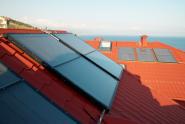Solar Unstoppable
Bill Opalka
renewablesbiz.com

While the economy bumps along, the solar market is experiencing an unprecedented boom. The industry in the first quarter grew by 66 percent year-over-year.
A new report by the Solar Energy Industries Association and GTM Research showed that the industry is well on its way to double last year, as earlier projections had shown.
“The first quarter of 2011 was the best first quarter in the history of the U.S. solar industry,” said Tom Kimbis, vice president of strategy and external affairs for SEIA. “First quarters are typically slow because of the weather as we saw that in the Northeast because of the snow.”
The commercial sector was where the greatest growth cam, not an unexpected outcome.
“The majority of this growth came in the non-residential sector, which grew 119% over Q1 2010. Despite strong growth in the first quarter, the market will need to ramp up even faster in order to meet industry expectations, which generally anticipate at least another doubling of the total U.S. PV market in 2011. Given the pipeline of projects and recent module price declines, we believe this outcome remains likely,” the report said.
Some highlights include:
• Grid-connected PV installations in Q1 2011 grew 66 percent over Q1 2010 to reach 252 MW.
• Cumulative grid-connected PV in the U.S. has now reached over 2.3 GW.
• The top seven states installed 88% of all PV in Q1 2011, up from 82% in 2010.
• Non-residential installations in Q1 2011 more than doubled over Q1 2010 in 10 of the top 21 states.
• Construction is underway on the 30 MW Alamosa CPV plant (in Colorado), with expected completion in 2011.
• There is a Concentrating Solar (combined CSP and CPV) pipeline of over 9 GW in the U.S.; more than 2.4 GW have signed PPAs.
• In total, 1,100 MW of CSP and CPV are now under construction in the U.S.
The total value of U.S. solar market installations grew 67 percent from $3.6 billion in 2009 to $6.0 billion in 2010. Solar electric installations in 2010 totaled 956 megawatts to reach a cumulative installed capacity of 2.6 gigawatts.
The uncertain policy environment played a role in the build-out as expiring programs and instability in the tax equity markets continued to dog al renewable energy development.
“We believe part of the boost to the market came from projects that were started in the fourth quarter of last year by developers trying to take advantage of the 1603 Treasury grant program, which was set to expire at the end of last year,” Kimbis said.
The pipeline of utility scale projects shows a healthy future in that segment. “There are 8.6 gigawatts of utility scale projects that have signed power purchase agreements,” said Shayle Kann, of GTM Research.
The utility sector has been growing (28 percent market share in 2010), while residential remained relatively steady, accounting for around 30 percent of total installations.
So the growth trend may continue for some time.
